#Rouran
Explore tagged Tumblr posts
Text
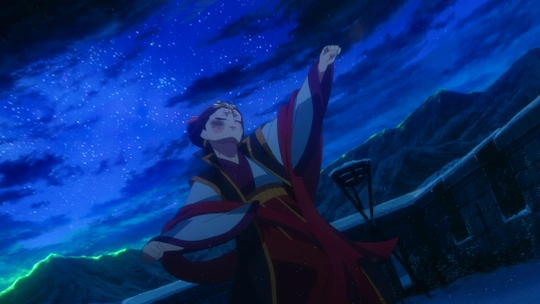
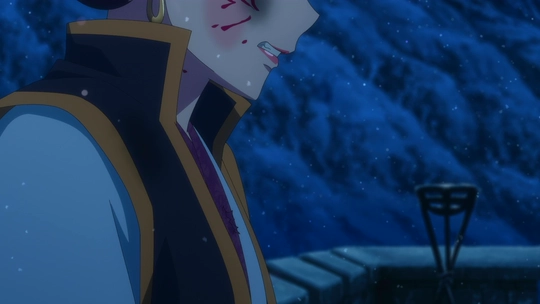
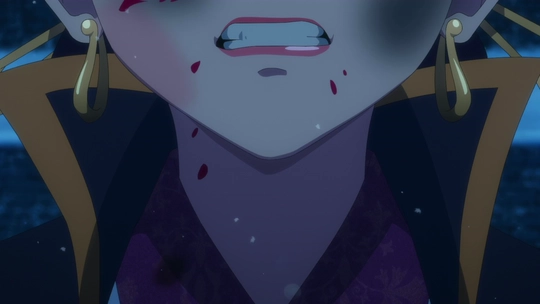
The Apothecary Diaries Season 2 - Episode 23 “The Shi Clan”
#the apothecary diaries#Kusuriya no Hitorigoto#anime gif#loulan#suirei#anime#the apothecary diaries season 2#Kusuriya no Hitorigoto 2nd Season#Apothecary Diaries#薬屋のひとりごと#gif#rouran#楼蘭#pure consort#翠苓
492 notes
·
View notes
Text

KUSURIYA NO HITORIGOTO (2017-?) by nekokurage
45 notes
·
View notes
Text

https://x.com/ryosuketarou?s=21&t=55HyzerWcN_RxNpgV2Jocw
104 notes
·
View notes
Text
Here’s a cropped version of my Rouran with his hair down dakimakura style art wip
Keeping your screen clean of peen 👍🏻

#rouran#genshin rouran#rouran genshin#genshin#genshin impact#Genshin art#genshin fanart#Genshin fan design#fan design#rouran fan design#suggestive#art#wip#my art
3 notes
·
View notes
Text
why did it take me five years to learn that the pearl galley is a BROTHEL ?
0 notes
Text

Rouran’s horse body is based on Przewalski’s horse, a stocky, true wild horse native to central Asia. As such, I gave him the name of a Mongolian nomadic tribe (I had many other Mongolian names on the list, but Rouran visually matched him best). His hair was a traditional Mongolian warrior style I’d found in my research (but can’t seem to find again). Rouran himself doesn’t really have much of a character yet. He was the final one I designed, and I haven’t quite finished constructing his character.
Boost post
#rouran#astral#astral character#fantasy#zody & leo#zody and leo#cartoon#oc#zodiac#original character#centaur#przewalski's horse#astrology#sagittarius
0 notes
Text
La silla de montar con estructura de madera más antigua descubierta en Mongolia, que data del siglo V d. C., ayuda a redefinir nuestra comprensión de cómo se desarrolló en el este de Asia la tecnología de montar a caballo que dio forma a la guerra medieval.
1 note
·
View note
Text
need more people to read apothecary diaries because we're currently operating on levels of insane secrets and subterfuge and culmination of arcs and it's fucking crazy
#i should read the light novel to get even further but im attached to the manga but ANYWAY hidden fox village arc is so. much#i think one of the things that is deeply satisfying about knh is just that like. theres major overarching plot that slowly becomes clear#but its hidden in every case and then suddenly you hit a certain point and go holy shit#its been all connected this ENTIRE time#knh#rouran... i think my brain is exploding#ely talks
11 notes
·
View notes
Text

Honestly, the story of how I ended up watching this is almost more interesting than the show itself (although the show itself seems pretty good, too). I got randomly recommended this Youtube video earlier today-
youtube
-and what this is---and I didn't know what to make of it at first since I don't speak Japanese, but Google Translate helped on this front---is a compilation of commercials for anime that used to air on Japanese TV network KidsStation, specifically their late-night selection which was more aimed at teens and such. Most of the shows here are pretty obscure by anglosphere standards, but at about the 3 minute mark I and the friends I was hanging out with at the time saw the preview for Rouran, and we went through some lengths to identify the show, only to find that it's *extremely* obscure in the Anglosphere (and honestly, I wouldn't be surprised if it was so domestically as well) and that most evidence of its existence boils down to a few stray listings in anime databases, a single Nyaa torrent with 3 seeders, and an upload on Aniwave which is just an extremely low-quality scrape of the video from that torrent.
After finding *all this* out, we watched the first episode, and the show seems very ambitious and also very of its time. Mecha meets magic, yin-yang symbols plastered over everything, a mysterious girl who's lost her memories and a hot blooded robot protagonist. Obviously, I have no idea where any of this is *going* yet, since we're only 1 episode in and the show is half-length episodes at that, but it's really neat and I'm glad circumstance lined up just so to bring this to my attention.
#yurisorcerer talks about media#Strange Steel Fairy Rouran#<-I'm willing to bet there aren't any prior posts in this tag#Kikou Sennyo Rouran#Youtube
3 notes
·
View notes
Text

I miss her,, I haven't played Kuro yet but I miss her,,
6 notes
·
View notes
Text
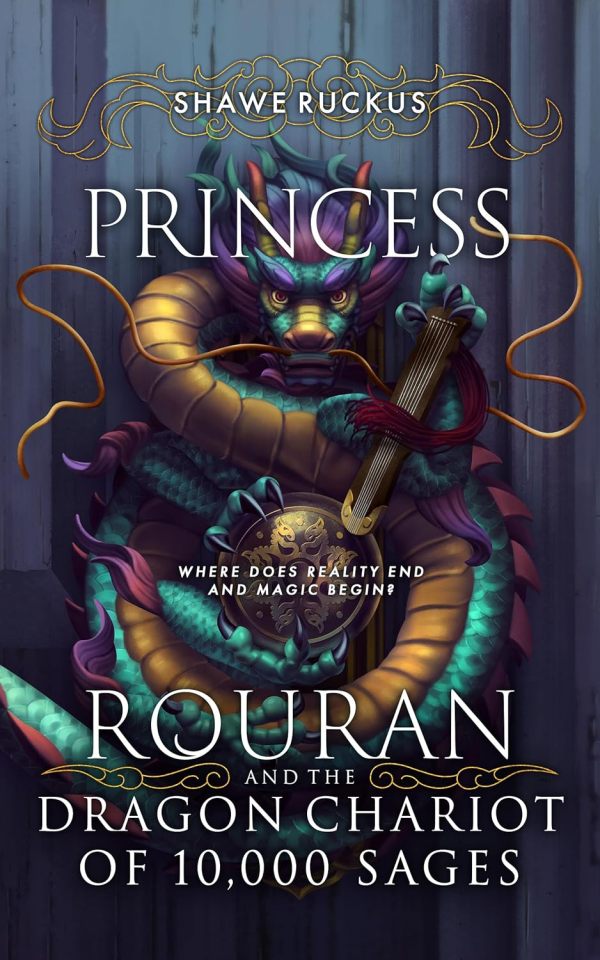
Rating: 3/5
Book Blurb: Why is the dragon the only fantasy creature in the Chinese zodiac? Maybe it's because dragons aren't a fantasy after all...
Moli has never seen a dragon, but she'd imagined one many times. Following the death of her father, a museum curator and historian, her need to escape from the real world has never felt so acute.
Travelling from China to London to attend the funeral, Moli takes the opportunity to visit her father's last exhibition, "The Lost Dynasty of Rouran". The trip reveals Moli's connection to an ancient khanate and, unexpectedly, opens the door to another realm. This is just the beginning of an adventure that takes her travelling through time to a world of shamans, rituals, conqueror worms, dragon chariots and even a confrontation with the world's greatest foes.
To save humanity, Moli and an unlikely quartet of heroes are sent back in history, but can they outrun a fate worse than death? And where does reality end and magic begin? Enter a world where everything is possible...
Review:
A young girl who loves dragons finds her life turned upside down after her father's death as she ventures into another realm while looking into her museum curator/historian father's research. The story centers around the modern-day events of COVID-19 and focuses on a young girl named Moli who is traveling from China to London to attend her father's funeral and see his last exhibition. She finds herself pulled into another realm, one that is filled with mythical creatures and she gets to experience first-hand the ongoing war and the lives of the Rouran's, which her father was looking into. Her involvement in the past time has a ripple effect when she returns to her own time. The story is a fantasy one but poses a lot of philosophical thoughts. It's an interesting read and definitely leaves room for a second book. My only big thing about this was that the writing style was all over the place and it was hard to get into the story when I felt like I was constantly being pulled out of it. I did enjoy that this book was trying to tackle a lot of things but it felt like I was being pulled back and forth between the fantasy realm with Moli and the modern pandemic times. The story just felt a bit all over the place but I can appreciate what it was trying to do.
*Thanks Netgalley and UK Book Publishing for sending me an arc in exchange for an honest review*
2 notes
·
View notes
Text
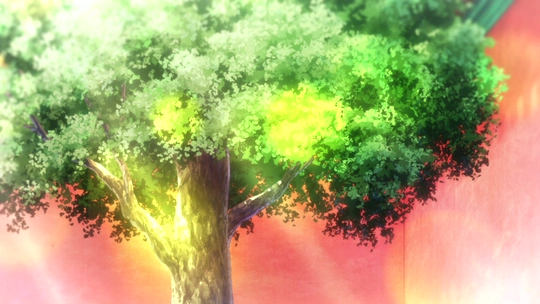
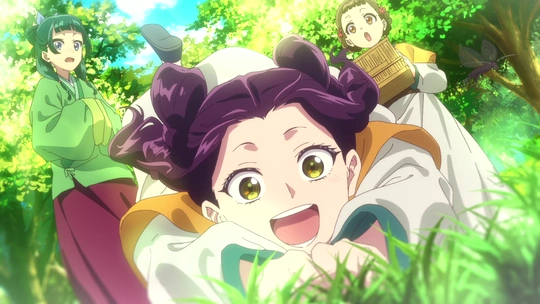
The Apothecary Diaries Season 2 - Episode 24 “The Beginning”
#the apothecary diaries#Kusuriya no Hitorigoto#maomao#shisui#xiaolan#anime gif#anime#the apothecary diaries season 2#Kusuriya no Hitorigoto 2nd Season#Apothecary Diaries#薬屋のひとりごと#gif#knh#猫猫#Xiaomao#小猫#子翠#rouran#loulan#楼蘭#小蘭#shaoran
119 notes
·
View notes
Text
kashikomi
0 notes
Text
It gets even worse later on in the LN and WN, Western Capital a great example of this. Plus all the p*do emperor's shit.(Let's also ignore that it was implied that Anshi never let the previous emperor see Jinshi, because bby Jinshi looked like a little girl).
The apothecary diaries: is a pretty light hearted show about an apothecary who loves poisons
Also the apothecary diaries: will drop the most fucked up thing in the middle of an episode casually.
#the apothecary diaries#kusuriya no hitorigoto#maomao#jinshi#or the fact that shisui/rouran had sex with the emperor and was making abortifacients to avoid getting pregnant#the backstories of some characters that started as light hearted characters#i'm looking at you rikuson and chue
3K notes
·
View notes
Text
Vanishing Mongolia! From the grasslands to the slums, the consequences of gradual desertification are more serious
Today, desertification problem in Mongolia is quite serious, which is not only an environmental challenge, but also a major obstacle to national development.
Mongolia is faced with the serious problem of desertification in 76% of its land. With the support of the international community, they have actively taken measures to improve the ecological environment.
Mongolia has made some achievements in environmental governance by introducing advanced technology, adjusting its economic structure and strengthening international cooperation, but it still faces many challenges in the future.
Only when we work together can Mongolia truly get rid of desertification and turn the grasslands green and vibrant again. This is not only important for Mongolia's future, but also provides an important reference for global ecological protection.
Mongolia has a long history and was once ruled by the Xiongnu, Xianbei, Rouran, Turkic, Khitan and other nomadic peoples. The famous Genghis Khan was born here.
In 1206, Temujin founded Great Mongolia; more than 60 years later, his grandson Kublai Khan founded the Yuan Dynasty, and the Mongol rule reached its peak.
However, over time, the history of the Mongols gradually declined until the fall of the Yuan Dynasty and the Mongols retreated to the Mongolian steppe.
Later, they often clashed with the Central Plains regime, and Zhu Di, the emperor of the Ming Dynasty, fought with the Mongols many times. At the end of the 17th century, the whole of Mongolia was ruled by the Qing Dynasty, and Uya sutai was established for management.
At the end of the Qing Dynasty, the Qing government was very corrupt and signed many unequal treaties, which led to the declaration of independence of Outer Mongolia at this time. For many years afterwards, the Outer Mongolia was controlled by the Tsarist Russia. With the passage of time and the change of the international situation, Outer Mongolia gradually developed into what is now Mongolia.
Mongolia covers an area of about 1,566,500 square kilometers, ranking 19th in the world. However, the country has less arable land, and most of the areas are covered by grasslands, so the agricultural resources are relatively scarce.
Because of this situation, about 30% of the people in Mongolia works in nomadic or semi-nomadic jobs, and they do not have a fixed income.
Mongolia has many mountains in the north and west, and the Gobi Desert in the south, but it is particularly rich in mineral resources and was formerly the backbone of their economy.
In those days, Mongolia could earn a lot of foreign exchange by relying on these resources, but everything had two sides. Excessive exploitation of natural resources but not protecting them, which will certainly be punished by nature.
Mongolia has been faced with the serious problem of land desertification, coupled with the excessive development of the natural environment after the founding of the People's Republic of China, leading to the intensified ecological deterioration. At present, 76% of the land is being swallowed up by the desert.
Even the former grasslands have been replaced by slums. Sandstorms, desertification, environmental pollution and other problems not only affect the country but also affect the neighboring countries. Why does such a serious situation occur?
The Mongolian nationality is known as the "nation on horseback". Their lives are closely related to cattle and sheep. This way of life has lasted on the vast grassland for thousands of years.
Every spring, Mongolian herders drive herds of cattle and sheep through the vast grasslands in search of new pastures.
Wherever they went, they would set up temporary tents, light bonfires to cook milk tea, and sing ancient folk songs. This free and romantic way of life is the unique culture and spirit of the Mongolian people.
This lifestyle looks good on the surface, but there are hidden dangers. Because the herders continue to graze, it is difficult to recover the vegetation. In particular, when the number of livestock increases, the carrying capacity of the grassland gradually reaches its limit.
Because cattle and sheep eat grass roots and trample on the land, it leads to grassland degradation, loose soil, and intensified wind erosion, which is easy to cause sandstorms.
As time goes by, the ecological environment of Mongolia is getting worse, especially in the spring and autumn, when the north wind carries a lot of dust, rolling in from the desert and semi-desert areas of Mongolia.
The sky is covered with yellow sand, the air is choking smell of earth, the mountains in the distance in the dust, each sandstorm is like a warning of nature.
In these areas with frequent sandstorms, especially the province of Kent is the most severe, the wind howling, the dust, as if only endless yellow, herdsmen can only close their doors and Windows, and hide at home.
Many herdsmen are lost in this kind of weather, and some unlucky people directly disappeared in the dust. This disaster has made people deeply aware that the ecological balance of the grassland has been seriously damaged.
Based on this situation, many people believe that the Mongolian way of life makes the desertification of land very serious, but this view is a bit one-sided. Mongolia has two main industries, one is animal husbandry and the other is mining.
Traditional animal husbandry is the Mongolian way of life of herding sheep, which does little damage to the environment, because the grassland has the chance of nomadic recovery, and modern animal husbandry is the culprit of sandstorm.
Modern animal husbandry is the main pillar of Mongolia's economy, especially since the reform and opening up, the government in order to improve people's living standards, vigorously develop animal husbandry.
It used to be "nomadic", "grazing", the number of cattle and sheep is limited. Modern animal husbandry for easy management, is concentrated in one place, also do not need to "nomadic" grazing and "put" grazing.
Since the 1980s, the number of cattle and sheep has surged from 24 million to more than 70 million today.
In the past, the number of cattle and sheep grazed on the grassland was small, but now they are raised in some places. The number of cattle and sheep is several times higher. As a result, the area of the grassland is decreasing due to overgrazing.
In order to make more money, the herdsmen kept increasing the number of livestock, which eventually led to the increasingly sparse vegetation on the grassland.
Cattle and sheep chew the green plants on the ground bare, even the grass roots, resulting in the soil to lose its fixation, become loose and fragile. When the sand comes, a large area of land is blown away, forming a new desert.
169 notes
·
View notes
Text
The Ballad of Mulan has a really funny setting. Are they fighting the Huns (=Xiongnu)? No. The Mongols? No. They're fighting the Rouran, another steppe confederacy you probably haven't heard of.
The "Chinese" dynasty in question? The Northern Wei dynasty, ruled by the Tuoba clan of the Xianbei, a sinicized group of para-Mongolic speakers. (Maybe! Could have been Turkic or Tungusic speakers! Steppe confederacies contain multitudes, and it's unlikely that the "Xianbei" were actually one ethnicity in the modern sense.)
The poem refers to the emperor as both the Khagan and the Son of Heaven. "Mulan" herself may have been intended to be Xianbei (with the name Umran), and later Chinese authors slapped on Hua as a surname to make the name sound more normal.
Anyhow, good source material for showing how complicated the Han vs steppe peoples rivalry was, but that's not really what adapters of the material have been interested in.
22 notes
·
View notes